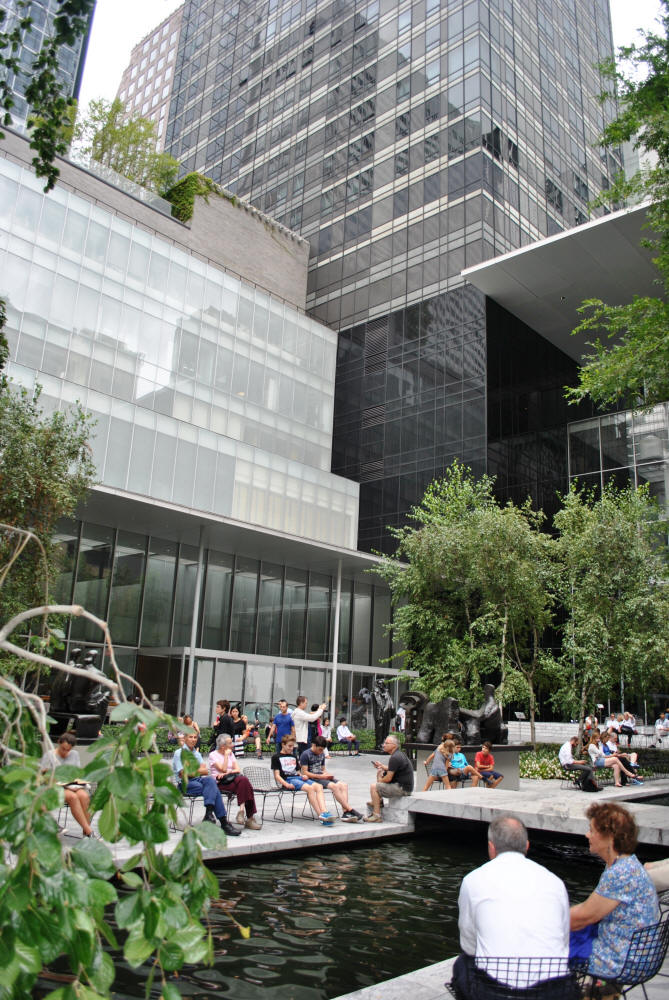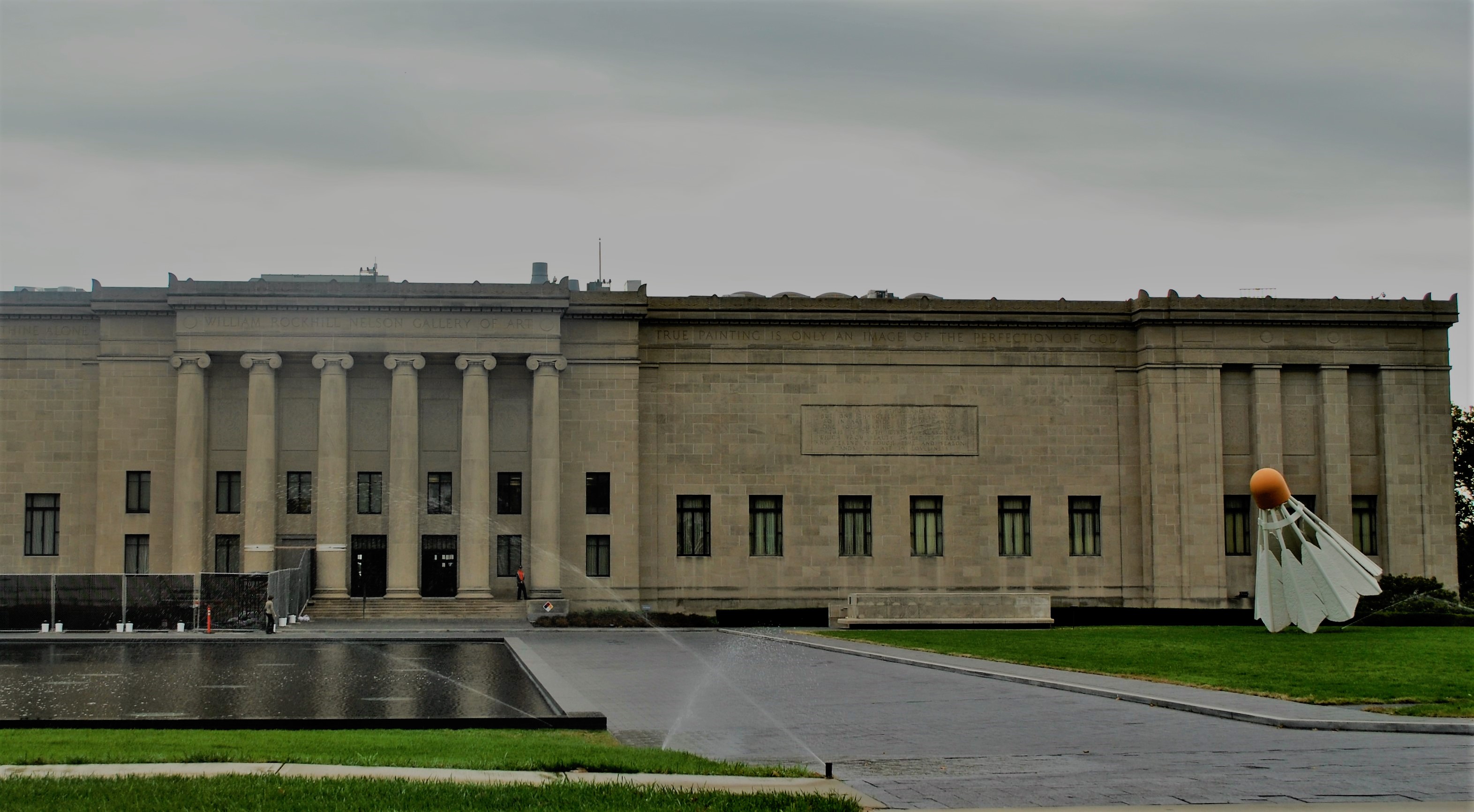Queer Places:
Parsons School of Design, 66 5th Ave, New York, NY 10011, Stati Uniti
The Art Students League of New York, 215 W 57th St, New York, NY 10019, Stati Uniti
National Academy Museum & School, 1083 5th Ave, New York, NY 10128, Stati Uniti
Cleveland Institute of Art, 11610 Euclid Ave, Cleveland, OH 44106, Stati Uniti
Ellsworth, Maine 04605, Stati Uniti
.jpg) Marsden
Hartley (January 4, 1877 – September 2, 1943) was an American Modernist
painter, poet, and essayist. One of the most unusual aspects of the
Stettheimers’ salon was the
large number of their gay, bisexual, and lesbian friends and acquaintances,
who were comfortable being their authentic selves among their straight
friends.
Several of the sisters’ closest friends, including
Charles Demuth,
Marsden Hartley,
Henry McBride,
Virgil Thomson, and Baron
Adolph de Meyer (married to a lesbian,
Olga Carracciolo) were homosexual;
Carl Van Vechten,
Cecil Beaton, and
Georgia O’Keeffe were bisexual;
Natalie Barney and
Romaine Brooks were lesbians; and
Alfred Stieglitz,
Marcel Duchamp,
Gaston Lachaise, Marie Sterner, and
Leo Stein were heterosexual. This open, natural mix of friends with different sexual preferences continued when Stettheimer held salons in her studio in the Beaux Arts building in midtown Manhattan, although later in life she also had parties where most of the guests were strong feminist women.
Marsden
Hartley (January 4, 1877 – September 2, 1943) was an American Modernist
painter, poet, and essayist. One of the most unusual aspects of the
Stettheimers’ salon was the
large number of their gay, bisexual, and lesbian friends and acquaintances,
who were comfortable being their authentic selves among their straight
friends.
Several of the sisters’ closest friends, including
Charles Demuth,
Marsden Hartley,
Henry McBride,
Virgil Thomson, and Baron
Adolph de Meyer (married to a lesbian,
Olga Carracciolo) were homosexual;
Carl Van Vechten,
Cecil Beaton, and
Georgia O’Keeffe were bisexual;
Natalie Barney and
Romaine Brooks were lesbians; and
Alfred Stieglitz,
Marcel Duchamp,
Gaston Lachaise, Marie Sterner, and
Leo Stein were heterosexual. This open, natural mix of friends with different sexual preferences continued when Stettheimer held salons in her studio in the Beaux Arts building in midtown Manhattan, although later in life she also had parties where most of the guests were strong feminist women.
Hartley was born in Lewiston, Maine,[1]
where his English parents had settled. He was the youngest of nine children.[2]
His mother died when he was eight, and his father remarried four years later
to Martha Marsden.[3]
His birth name was Edmund Hartley; he later assumed Marsden as his first name
when he was in his early 20s.[2]
A few years after his mother's death when Hartley was 14, his family moved to
Ohio, leaving him behind in Maine to work in a shoe factory for a year.[4]
These bleak occurrences led Hartley to recall his New England childhood as a
time of painful loneliness, so much so that in a letter to Alfred Stieglitz,
he once described the New England accent as "a sad recollection [that] rushed
into my very flesh like sharpened knives."[5]
After he joined his family in Cleveland, Ohio, in 1892, Hartley began his
art training at the Cleveland School of Art, where he held a scholarship.[1][6]

by Carl Van Vechten

by
George Platt Lynes
In 1898, at age 22, Hartley moved to New York City to study painting at the
New York School of Art under William Merritt Chase, and then attended the
National Academy of Design.[1]
Hartley was a great admirer of Albert Pinkham Ryder and visited his studio in
Greenwich Village as often as possible. His friendship with Ryder, in addition
to the writings of Walt
Whitman and American transcendentalists
Henry David
Thoreau and
Ralph Waldo
Emerson, inspired Hartley to view art as a spiritual quest.[1]
Hartley moved to an abandoned farm near Lovell, Maine, in 1908.[1]
He considered the paintings he produced there his first mature works, and they
also impressed New York photographer and art promoter Alfred Stieglitz.[1]
Hartley had his first solo exhibition at Stieglitz's
291 in 1909,[1]
and exhibited his work there again in 1912. Stieglitz also provided Hartley's
introduction to European modernist painters, of whom Cézanne, Picasso, and
Matisse would prove the most influential upon him.[1]
Hartley first traveled to Europe in April 1912, and he became acquainted
with Gertrude Stein's
circle of avante-garde writers and artists in Paris.[1]
Stein, along with Hart Crane
and Sherwood Anderson, encouraged Hartley to write as well as paint.[2]
In 1913, Hartley moved to Berlin, where he continued to paint and
befriended the painters Wassily Kandinsky and Franz Marc.[1]
He also collected Bavarian folk art.[7]
His work during this period was a combination of abstraction and German
Expressionism, fueled by his personal brand of mysticism.[1]
Many of Hartley's Berlin paintings were further inspired by the German
military pageantry then on display, though his view of this subject changed
after the outbreak of World War I, once war was no longer "a romantic but a
real reality."[7]
The earliest of his Berlin paintings were shown in the landmark 1913 Armory
Show in New York.[3]
In Berlin, Hartley developed a close relationship with a Prussian
lieutenant, Karl von Freyburg, who was the cousin of Hartley's friend Arnold
Ronnebeck. References to Freyburg were a recurring motif in Hartley's work,[7]
most notably in Portrait of a German Officer (1914).[8]
Freyburg's subsequent death during the war hit Hartley hard, and he afterward
idealized their relationship.[7]
Many scholars interpreted his work regarding Freyburg as embodying his
homosexual feelings for him.[3]
Hartley finally returned to the U.S. in early 1916.[1]
He lived in Europe again from 1921 to 1930, when he moved back to the U.S. for
good.[1]
He painted throughout the country, in Massachusetts, New Mexico, California,
and New York. He returned to Maine in 1937, after declaring that he wanted to
become "the painter of Maine" and depict American life at a local level.[9]
This aligned Hartley with the Regionalism movement, a group of artists active
from the early- to mid-20th century that attempted to represent a distinctly
"American art." He continued to paint in Maine, primarily scenes around Lovell
and the Corea coast, until his death in Ellsworth in 1943.[2]
His ashes were scattered on the Androscoggin River.[2]
In addition to being considered one of the foremost American painters of
the first half of the 20th century, Hartley also wrote poems, essays, and
stories. His book Twenty-five Poems was published by
Robert McAlmon in
Paris in 1923.
Cleophas and His Own: A North Atlantic Tragedy is a story based on
two periods he spent in 1935 and 1936 with the Mason family in the Lunenburg
County, Nova Scotia, fishing community of East Point Island. Hartley, then in
his late 50s, found there both an innocent, unrestrained love and the sense of
family he had been seeking since his unhappy childhood in Maine. The impact of
this experience lasted until his death in 1943 and helped widen the scope of
his mature works, which included numerous portrayals of the Masons.
He wrote of the Masons, "Five magnificent chapters out of an amazing, human
book, these beautiful human beings, loving, tender, strong, courageous,
dutiful, kind, so like the salt of the sea, the grit of the earth, the sheer
face of the cliff." In Cleophas and His Own, written in Nova Scotia in
the fall of 1936 and re-printed in Marsden Hartley and Nova Scotia,
Hartley expresses his immense grief at the tragic drowning of the Mason sons.
The independent filmmaker Michael Maglaras has created a feature film
Cleophas and His Own, released in 2005, which uses a personal testament by
Hartley as its screenplay.
A catalogue raisonné of Hartley's work is underway by art historian Gail
Levin, Distinguished Professor at Baruch College, and The Graduate Center of
The City University of New York.

Metropolitan Museum of Art, NYC

Museum of Modern Art, 11 W 53rd St, New York, NY 10019

Nelson-Atkins Museum of Art, Kansas City, MO

University of California, Berkeley, CA
My published books:


BACK TO HOME PAGE

- https://en.wikipedia.org/wiki/Marsden_Hartley
- Hidden Histories, 20th Century Male Same Sex Lovers in the Visual
Arts, by Michael Petry
.jpg) Marsden
Hartley (January 4, 1877 – September 2, 1943) was an American Modernist
painter, poet, and essayist. One of the most unusual aspects of the
Stettheimers’ salon was the
large number of their gay, bisexual, and lesbian friends and acquaintances,
who were comfortable being their authentic selves among their straight
friends.
Several of the sisters’ closest friends, including
Charles Demuth,
Marsden Hartley,
Henry McBride,
Virgil Thomson, and Baron
Adolph de Meyer (married to a lesbian,
Olga Carracciolo) were homosexual;
Carl Van Vechten,
Cecil Beaton, and
Georgia O’Keeffe were bisexual;
Natalie Barney and
Romaine Brooks were lesbians; and
Alfred Stieglitz,
Marcel Duchamp,
Gaston Lachaise, Marie Sterner, and
Leo Stein were heterosexual. This open, natural mix of friends with different sexual preferences continued when Stettheimer held salons in her studio in the Beaux Arts building in midtown Manhattan, although later in life she also had parties where most of the guests were strong feminist women.
Marsden
Hartley (January 4, 1877 – September 2, 1943) was an American Modernist
painter, poet, and essayist. One of the most unusual aspects of the
Stettheimers’ salon was the
large number of their gay, bisexual, and lesbian friends and acquaintances,
who were comfortable being their authentic selves among their straight
friends.
Several of the sisters’ closest friends, including
Charles Demuth,
Marsden Hartley,
Henry McBride,
Virgil Thomson, and Baron
Adolph de Meyer (married to a lesbian,
Olga Carracciolo) were homosexual;
Carl Van Vechten,
Cecil Beaton, and
Georgia O’Keeffe were bisexual;
Natalie Barney and
Romaine Brooks were lesbians; and
Alfred Stieglitz,
Marcel Duchamp,
Gaston Lachaise, Marie Sterner, and
Leo Stein were heterosexual. This open, natural mix of friends with different sexual preferences continued when Stettheimer held salons in her studio in the Beaux Arts building in midtown Manhattan, although later in life she also had parties where most of the guests were strong feminist women. 






